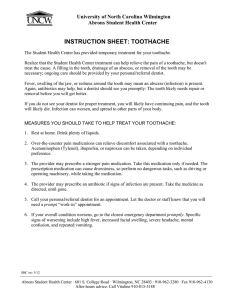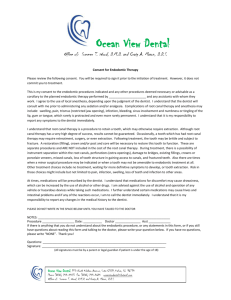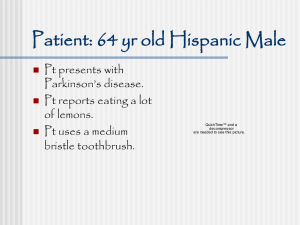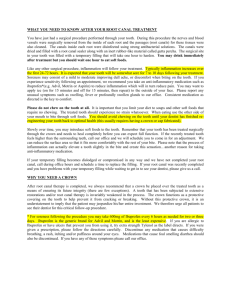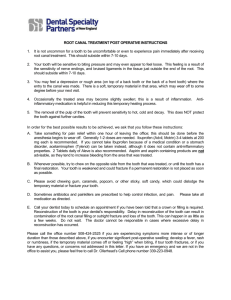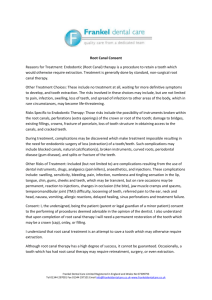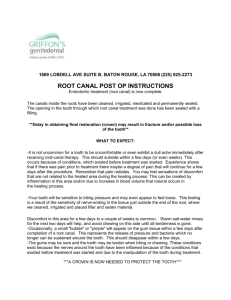Post Operative Instructions for Root Canal Treatment
advertisement
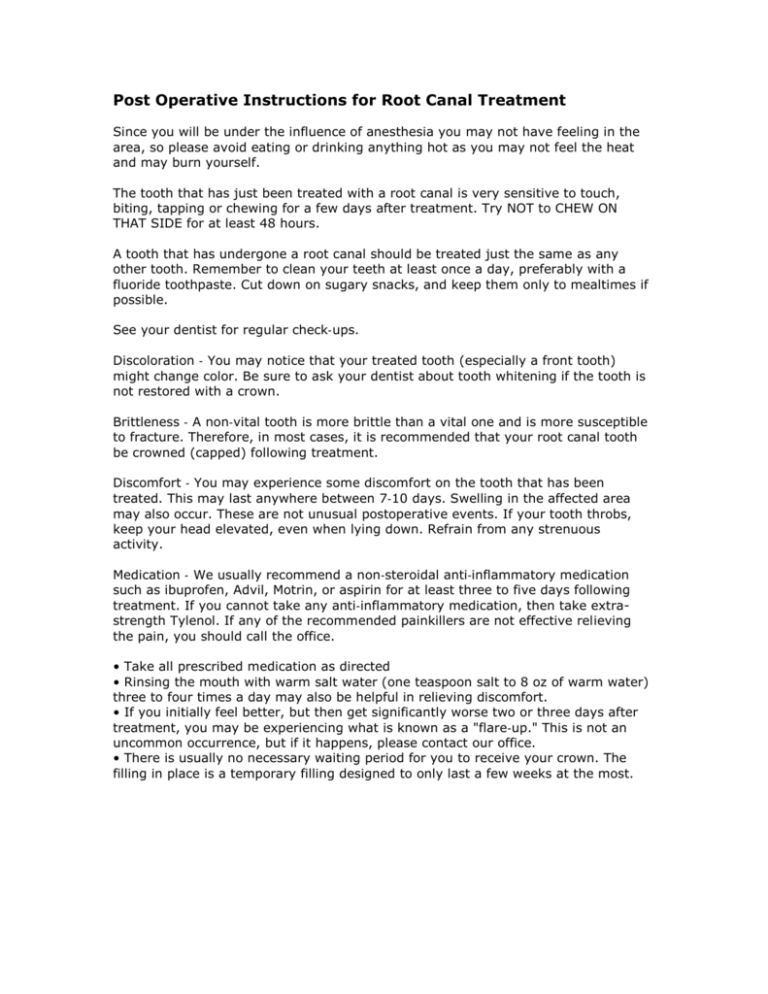
Post Operative Instructions for Root Canal Treatment Since you will be under the influence of anesthesia you may not have feeling in the area, so please avoid eating or drinking anything hot as you may not feel the heat and may burn yourself. The tooth that has just been treated with a root canal is very sensitive to touch, biting, tapping or chewing for a few days after treatment. Try NOT to CHEW ON THAT SIDE for at least 48 hours. A tooth that has undergone a root canal should be treated just the same as any other tooth. Remember to clean your teeth at least once a day, preferably with a fluoride toothpaste. Cut down on sugary snacks, and keep them only to mealtimes if possible. See your dentist for regular check‐ups. Discoloration ‐ You may notice that your treated tooth (especially a front tooth) might change color. Be sure to ask your dentist about tooth whitening if the tooth is not restored with a crown. Brittleness ‐ A non‐vital tooth is more brittle than a vital one and is more susceptible to fracture. Therefore, in most cases, it is recommended that your root canal tooth be crowned (capped) following treatment. Discomfort ‐ You may experience some discomfort on the tooth that has been treated. This may last anywhere between 7‐10 days. Swelling in the affected area may also occur. These are not unusual postoperative events. If your tooth throbs, keep your head elevated, even when lying down. Refrain from any strenuous activity. Medication ‐ We usually recommend a non‐steroidal anti‐inflammatory medication such as ibuprofen, Advil, Motrin, or aspirin for at least three to five days following treatment. If you cannot take any anti‐inflammatory medication, then take extrastrength Tylenol. If any of the recommended painkillers are not effective relieving the pain, you should call the office. • Take all prescribed medication as directed • Rinsing the mouth with warm salt water (one teaspoon salt to 8 oz of warm water) three to four times a day may also be helpful in relieving discomfort. • If you initially feel better, but then get significantly worse two or three days after treatment, you may be experiencing what is known as a "flare‐up." This is not an uncommon occurrence, but if it happens, please contact our office. • There is usually no necessary waiting period for you to receive your crown. The filling in place is a temporary filling designed to only last a few weeks at the most.



